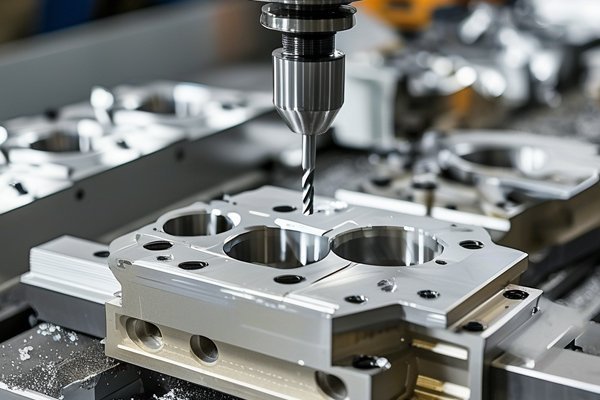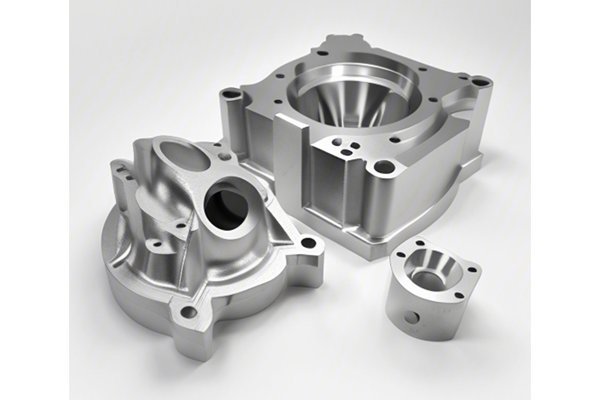Did you know that the aerospace industry is expected to generate over $800 billion in revenue by 2025, and a significant portion of that revenue relies on precision-engineered aluminum components? This staggering statistic emphasizes not only the importance of high-quality manufacturing processes but also highlights the growing demand for custom aluminum parts in various industries, from aerospace and automotive to electronics and medical devices.
CNC (Computer Numerical Control) machining stands out as one of the most efficient, accurate, and versatile manufacturing processes for producing custom aluminum parts. In this article, we’ll explore the multitude of benefits CNC machining offers for custom aluminum production, delve into the specifics of the machining process, and provide guidance on how to select the right provider for your custom machining needs.
—
CNC machining is a manufacturing process that involves the use of computer-controlled machines to create components from a variety of materials, including metals, plastics, and composites. This technology allows for high precision and repeatability, enabling manufacturers to produce complex parts with tight tolerances and superior surface finishes.
In CNC machining, a digital file created through computer-aided design (CAD) software guides the machining process. As the CNC machine executes the instructions from the software, it utilizes cutting tools to remove material from a workpiece until the desired shape and dimensions are achieved.
When it comes to producing custom aluminum parts, CNC machining offers several significant benefits:
2.1 Precision and Accuracy
CNC machines are capable of achieving tolerances as tight as ±0.001 inches, ensuring that custom parts meet stringent specifications. This level of accuracy is essential in industries where even minor deviations can lead to product failure or safety hazards.
2.2 Consistency and Repeatability
Once a CNC program is established, the machine can produce identical components with the same level of reliability. This consistency is critical for mass production, where uniformity is vital to ensure functionality and performance.
2.3 Flexibility for Complex Designs
CNC machining allows for the production of intricate geometries and complex features that may be difficult or impossible to achieve through traditional manufacturing methods. This flexibility enables engineers and designers to innovate and create parts that fit specific applications.
2.4 Reduced Lead Times
With CNC machining, the time required to set up and produce custom parts is significantly reduced. Advanced technologies such as rapid prototyping and multi-axis machining enable manufacturers to accelerate the production process without sacrificing quality.
2.5 Material Efficiency
CNC machining minimizes waste by precisely cutting material only where necessary. Since aluminum is a valuable resource, efficient machining can lead to cost savings in the overall production process.
2.6 Versatility in Material Use
Aluminum is one of the most commonly used materials in CNC machining due to its lightweight properties, corrosion resistance, and ease of machinability. This versatility enables manufacturers to produce parts that can be used across a myriad of industries.
The process of CNC machining for custom aluminum parts can be broken down into several key steps:
3.1 Design and Prototyping
The process begins with creating a digital 3D model using CAD software. This model serves as a blueprint for the CNC machine. Once the design is finalized, a prototype may be produced using rapid prototyping techniques to test the functionality and fit of the part.
3.2 Tool Path Generation
After the CAD model is created, it needs to be translated into a format that the CNC machine can read. This step involves using computer-aided manufacturing (CAM) software to generate the tool path, which dictates the movement of the cutting tools based on the programmed design.
3.3 Material Setup
Once the programming is complete, the aluminum block or sheet is secured to the CNC machine’s worktable or fixture. Proper setup is crucial for achieving the desired accuracy and preventing any movement during the machining process.
3.4 Machining Operations
The CNC machine begins the machining process, which may involve turning, milling, drilling, or a combination of operations. Various cutting tools are employed depending on the complexity of the design and the desired finish.
3.5 Inspection and Quality Control
After machining is complete, the custom aluminum part undergoes inspection to ensure it meets the specified tolerances and quality standards. This may include using coordinate measuring machines (CMM) or other precision measurement tools.
3.6 Finishing Operations
Depending on the requirement, finishing processes such as anodizing, polishing, or coating may be applied to enhance the part’s appearance, increase durability, or improve corrosion resistance.

CNC machined aluminum parts play a crucial role in various industries due to their lightweight and durable nature. Here are some key applications:
4.1 Aerospace
Aluminum components are extensively used in aerospace applications, including aircraft frames, engine parts, and structural components. The lightweight nature of aluminum helps improve fuel efficiency and overall performance.
4.2 Automotive
In the automotive industry, custom aluminum parts are utilized for engine components, transmission housings, and structural elements. The ability to reduce weight without compromising strength is essential for meeting fuel efficiency standards.
4.3 Electronics
CNC machined aluminum enclosures are popular in electronics manufacturing. They provide protection for sensitive electronic components while allowing for effective heat dissipation.
4.4 Medical Devices
The medical field relies on precision-engineered aluminum parts for equipment such as surgical instruments, implants, and diagnostic devices. The reliability and sterility of aluminum make it an ideal choice.
4.5 Industrial Equipment
Custom aluminum components are frequently used in machinery, tools, and equipment across various industries due to their strength-to-weight ratio and resistance to environmental factors.
When selecting a CNC machining provider for custom aluminum parts, consider the following factors:
5.1 Experience and Expertise
Look for a machining provider with a proven track record in producing aluminum parts. Their experience in managing different complexities and specifications can significantly impact the final product’s quality.
5.2 Advanced Technology
Ensure the provider utilizes the latest CNC machinery and software for both CAD and CAM processes. Advanced equipment can enhance precision, reduce lead times, and improve overall efficiency.
5.3 Quality Assurance
Inquire about the quality control measures in place, including inspection techniques and certifications. A commitment to quality assurance processes ensures that the final product is reliable and compliant with industry standards.
5.4 Material Options
Check whether the machining provider offers a range of aluminum alloys to suit specific project requirements. Different aluminum grades have varying properties, and your choice may impact performance.
5.5 Customer Support
A responsive and knowledgeable customer support team can provide valuable assistance throughout the process, from design to production. Strong communication is crucial for addressing concerns and ensuring project success.
Choosing the right CNC machining partner for custom aluminum parts is critical for the success of your project. Here’s a step-by-step guide to help you make an informed decision:
6.1 Research Potential Vendors
Begin by researching different CNC machining companies. Look for those with specialization in aluminum parts and established reputation in the industry.
6.2 Request Quotes
Contact multiple providers to request quotes and discuss your specific requirements. This will provide insight into pricing, capabilities, and lead times.
6.3 Review Past Projects
Ask for case studies or examples of previous work the vendor has completed. This will help assess their capability to meet your project’s complexity and volume.
6.4 Seek References
Reach out to past clients to gather feedback. Testimonials and reviews can offer valuable insights into the vendor’s reliability and performance.
6.5 Finalize a Partnership
Once you have collected the necessary information, make an informed decision based on the vendor’s experience, quality assurance protocols, pricing, and customer support.
CNC machining has revolutionized the production of custom aluminum parts, providing manufacturers with unprecedented levels of precision, efficiency, and flexibility. By leveraging the numerous benefits of CNC technology, businesses can produce complex components that meet stringent industry standards while minimizing lead times and material waste.
In this blog, we explored the intricacies of CNC machining, its advantages for custom aluminum part production, and provided practical guidance for selecting the right machining partner. As industries evolve and demand for high-quality, custom components continues to grow, understanding the capabilities and benefits of CNC machining will be crucial for staying competitive.
In a world where precision and efficiency play pivotal roles in manufacturing success, considering CNC machining for custom aluminum parts is not merely an option; it is an imperative. By investing in this technology, manufacturers don’t just create parts—they enable innovation, enhance performance, and ultimately contribute to a thriving future across various industries.






